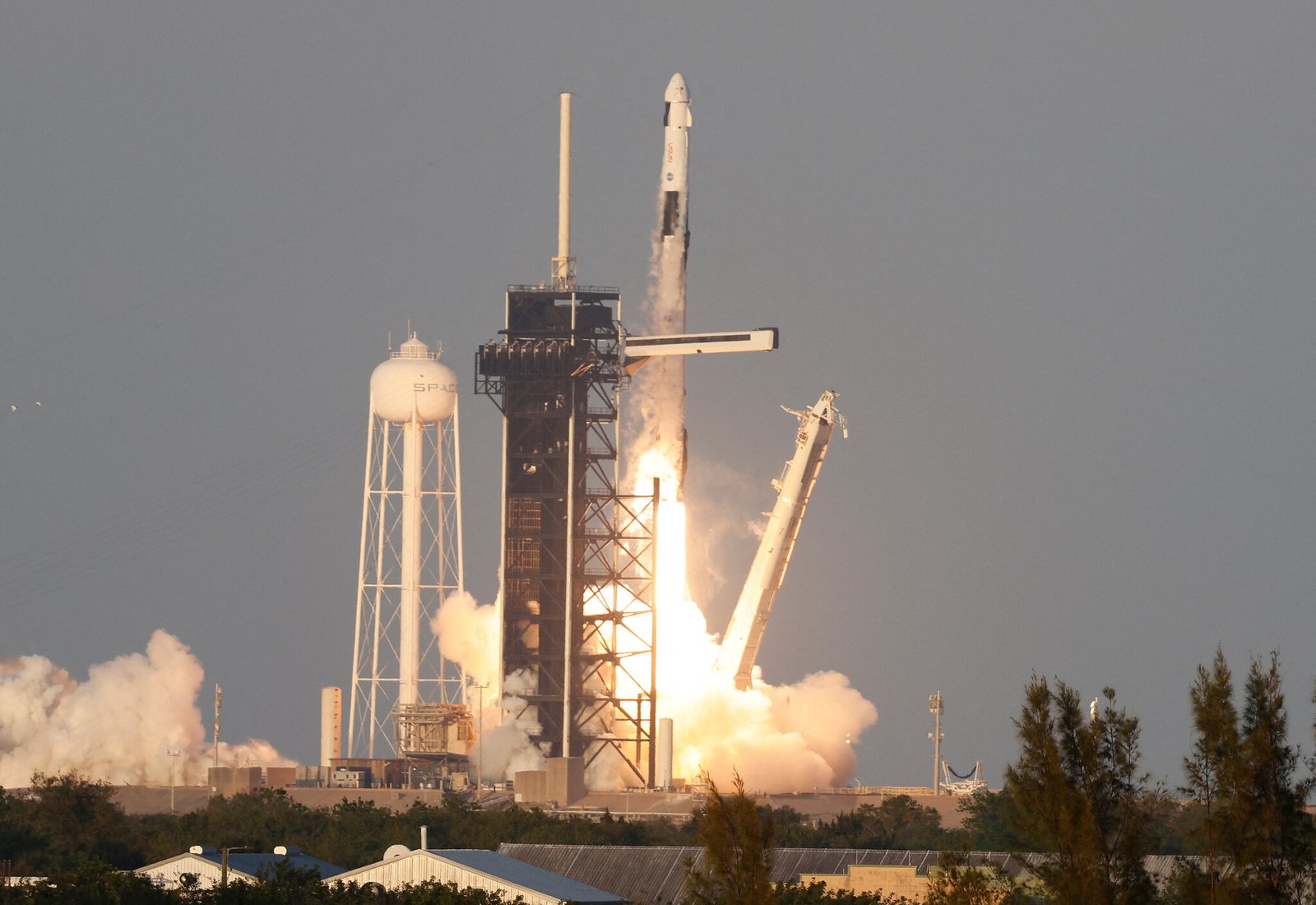
SpaceX Successfully Launches Crew-10 Mission to Rescue Stranded NASA Astronauts
In a landmark mission blending international collaboration and cutting-edge technology, SpaceX’s Crew-10 roared into the skies on Friday, March 14, 2025, from NASA’s Kennedy Space Center in Florida. The mission aims to relieve astronauts Barry “Butch” Wilmore and Suni Williams, who have been stranded aboard the International Space Station (ISS) since June 2023 due to technical setbacks with Boeing’s Starliner spacecraft.
A Delayed but Flawless Liftoff
The Falcon 9 rocket, carrying SpaceX’s Dragon spacecraft Endurance, launched at 7:03 p.m. EDT under near-perfect weather conditions. The mission had been postponed just two days earlier due to a hydraulic issue in ground equipment, but engineers resolved the problem swiftly. NASA’s Steve Stich praised the teams for their quick troubleshooting: “Their commitment to excellence and safety is a testament to the strength of this partnership.”
The Crew-10 astronauts—commander Anne McClain (NASA), pilot Nichole Ayers (NASA), mission specialist Takuya Onishi (JAXA), and cosmonaut Kirill Peskov (Roscosmos)—arrived at the launchpad in Teslas adorned with “LIF10FF” license plates, a nod to the mission’s milestone as SpaceX’s 10th crewed flight. Before liftoff, they participated in traditions like a pre-launch card game to ward off bad luck, blending ritual with modern spaceflight.
Rescue Mission for Stranded Crew
Crew-10’s primary goal is to bring home Wilmore and Williams, who arrived at the ISS in June 2023 for a week-long test of Boeing’s Starliner. However, propulsion leaks and thruster malfunctions forced NASA to scrap plans for their return aboard the Starliner, which instead returned to Earth unmanned in September. Since then, the duo has spent nine months conducting over 900 hours of scientific research, including studies on microgravity’s effects on human health and materials.
The delay allowed NASA and Boeing to gather critical data on Starliner’s performance, but it left Wilmore and Williams reliant on SpaceX for their eventual return. “We’re not accepting more risk than necessary for our crew,” NASA stated in August 2023, emphasizing safety over expediency.
Handover in Orbit
After a 28-hour journey, Crew-10 is set to dock with the ISS on Saturday, March 15, at 11:30 p.m. EDT. The new crew will spend several days training with outgoing astronauts—Wilmore, Williams, NASA’s Nick Hague, and Roscosmos’ Aleksandr Gorbunov—to ensure a smooth transition. This handover includes updates on ongoing experiments, station maintenance, and operational protocols.
Crew-9, which has been stationed at the ISS since September 2024, will depart as early as March 19 aboard their Dragon spacecraft. Wilmore and Williams’ extended stay highlights the complexities of spaceflight but also underscores the ISS’s role as a resilient hub for long-term research.
The Crew: Veterans and Newcomers
-
Anne McClain (Commander): A seasoned NASA astronaut and former Army pilot, McClain is making her second trip to the ISS.
-
Nichole Ayers (Pilot): A U.S. Air Force fighter pilot, this marks Ayers’ inaugural spaceflight.
-
Takuya Onishi (Mission Specialist): A veteran JAXA astronaut returning to the ISS for the first time since 2016.
-
Kirill Peskov (Mission Specialist): A Roscosmos cosmonaut embarking on his debut mission.
Their six-month stay will focus on advanced research, including experiments in fluid dynamics, plant growth in microgravity, and technology demonstrations for future lunar and Martian missions.
Behind the Scenes: Starliner’s Troubles
Boeing’s Starliner, developed under NASA’s Commercial Crew Program, faced setbacks during its uncrewed test flight in 2023. Persistent helium leaks and thruster issues during docking raised safety concerns, prompting NASA to rely solely on SpaceX for crew rotations—a stark contrast to the program’s original goal of having two redundant spacecraft.
The Crew-10 mission underscores SpaceX’s dominance in commercial spaceflight, with the Falcon 9 and Dragon now responsible for all NASA crewed launches since 2020.
Political and Public Support
The mission drew attention from the highest levels of government. Former President Donald Trump sent a lighthearted message to the stranded astronauts, joking, “We love you—maybe I’ll join the rescue!” Meanwhile, NASA officials acknowledged bipartisan support for the agency’s ambitions, noting, “Our presidents always care deeply about space exploration.”
Elon Musk, SpaceX’s CEO, remained uncharacteristically quiet on social media post-launch, but the company’s success speaks for itself: Crew-10 marks the 10th operational crewed mission for SpaceX, cementing its role as a cornerstone of NASA’s lunar and deep-space exploration plans.
What’s Next?
-
Crew-9’s Return: Wilmore, Williams, Hague, and Gorbunov will splash down off Florida’s coast aboard their Dragon capsule, concluding a marathon stay in orbit.
-
Starliner’s Future: Boeing aims to address Starliner’s issues for future missions, though NASA has not yet confirmed a new crewed test flight.
-
Crew-10’s Science Goals: The new team will conduct over 200 experiments, including studies on astronaut health and next-gen spacecraft materials.
A Testament to Resilience
The Crew-10 mission embodies the spirit of perseverance—from engineers solving last-minute glitches to astronauts adapting to unforeseen challenges. As McClain and her crew settle into their orbital home, their journey symbolizes humanity’s unwavering drive to explore, innovate, and push beyond the limits of what’s possible.
For live updates on Crew-10’s mission, follow NASA’s broadcast on NASA+ or social media channels.